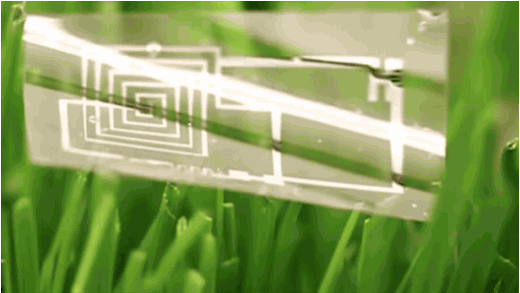
An electronic circuit that dissolves in the presence of water. From video by University of Illinois
If a picture’s worth a thousand words, a GIF is easily worth a million. The file format—which uses a series of images to produce a looping video, like a flip book—is a tremendous way to convey all sorts of moving wonders, and 2013 was the year that the GIF truly went mainstream, with GIFs of celebrities, sports and politicians filling the Web.
But 2013 was also a banner year for science—so much so that the word ‘science’ was Merriam-Webster’s word of the year. It’s appropriate, then, that we use the GIF to explore some of the coolest, weirdest, most remarkable science stories of 2013. What follows is a non-exhaustive list of amazing science GIFs from 2013, in no particular order.
Top: Dissolving Electronics
Over the past few years, the University of Illinois lab led by John Rogers (one of Smithsonian magazine’s American Ingenuity Award Winners) has engineered all sorts of amazing devices that bridge the gap between biology and technology: stretchable batteries that could be used in wearable gadgets or medical implants, tiny LEDs that can be implanted in the brain to manipulate individual neurons and ultrathin electronics that can graft circuits onto human skin.
Perhaps the most amazing creation, though, is their entirely dissolvable electronic circuit, which could someday be used in environmental monitoring and medical devices so that circuitry disappears after it’s no longer needed.
A Solar Eruption
From video by NASA
Solar activity, as you might imagine, can get pretty intense. In February, NASA released a video of a particularly turbulent day in the life of the sun, as a trio of events—a solar flare, a coronal mass ejection and shifting of magnetic field lines in the Sun’s atmosphere—all occurred at the same time.
Pitch Drop
From video via Trinity College, GIF via It’s Okay To Be Smart
In 1944, Trinity College physicist Ernest Walton set up one of two pitch-drop experiments worldwide, seeking to experimentally prove that pitch is a viscous, flowing material. Walton has since died, but 69 years after his legendary experiment began, Trinity researchers finally managed to catch a drop of pitch falling on camera this past July.
Chelyabinsk Meteor
Video and GIF via Gifric
In February, a massive, 12,000-ton meteor—the largest known to hit Earth since 1908—flew through the skies above Chelyabinsk, Russia at 60 times the speed of sound and shattered into pieces. The meteor caused damaged to about 7,200 buildings and caused nearly 1,500 people to seek medical attention for injuries. Luckily, no one was killed; luckier still, dozens of local residents caught the event on camera.
A Thought Moves Through a Fish’s Brain
From video via Current Biology, Muto et. al.
This one seriously sounds like science fiction: In the GIF above, that tiny purple blip zigging and zagging around is an individual thought of a zebrafish, moving around its brain.
Japanese scientists captured it by using a probe sensitive to florescence, relying upon a particular gene called GCaMP that reacts to the presence of calcium ions by fluorescing brightly. Because calcium concentrations fluctuate when neurons fire, the florescent spot is the location of neuron activity in the fish’s brain. This was confirmed by the fact that the pattern above occurred after the researchers released a paramecium into the fish’s environment—and the particular brain areas activated matched the neurons that fired when the fish visually tracked a dot moving around in the same directions.
A Washcloth is Squeezed in Space
From video by Canadian Space Agency, GIF via io9
Canadian astronaut Chris Hadfield, who spent 166 days at the International Space Station before returning in May, is the ideal astronaut for the social media era: he frequently tweeted photos from space and posted videos to his followers on YouTube, who number just over one million, to show what life in space is really like. In April, in response to a question submitted by high school students, he posted a video showing what happens when you try to wring out a washcloth in the space station’s zero-gravity environment. Spoiler: it’s not too easy.
Artificial Muscles Dance
Put these thin black polymer films down on a moist surface, and they’ll dance around of their own accord. In January, a group of MIT researchers revealed a special polymer that can move on its own, harnessing the energy present in water. They envision the material someday being useful in powering tiny electronics, utilizing an energy source that’s already abundant in the environment.
A Red Batfish Eats
From video by Enoshima Aquariaum
In October, our Smart News bloggers called attention to one of the ocean’s most peculiar creatures: the red batfish, found on the continental shelves of the Pacific. The GIF above, taken from a video filmed at Enoshima Aquarium in Fujisawa, Japan, shows the creature feeding on a piece of krill.
A Pineapple Rots
From video by Temponaut Timelapse
A pineapple, a time-lapse camera, and two months of time: That’s all you need to document the process of decomposition in a uniquely clear (and revolting) way. The video above, released in August, shows bacteria, fungi and ants hard at work, breaking down succulent pineapple flesh that was left out to be filmed as it decomposed.
The folks at Temponaut Timelapse have created all sorts of remarkable timelapses, of subjects both beautiful (New York City’s skyline, for instance) and wonderfully repulsive (rotting strawberries, bananas and grapes).
A Chain Levitates
From video by Earth Unplugged, GIF via io9
In June, a video that made the rounds seemed to depict the impossible: Earth Unplugged showed how a bead chain can appear to levitate as one end falls out of a beaker. As it turns out, there’s no magic involved, but rather a fascinating scientific explanation. Once some beads are dropped out of the container, their momentum pulls more beads along with them, and the limited flexibility of the chain causes it to assume shapes that appear to defy gravity as it falls.
Read more: http://blogs.smithsonianmag.com/science/2013/12/the-coolest-science-of-2013-in-gifs/#ixzz2onmp9VnE
Give the gift of Smithsonian magazine for only $12!: http://bit.ly/1cGUiGv
Follow us: @SmithsonianMag on Twitter

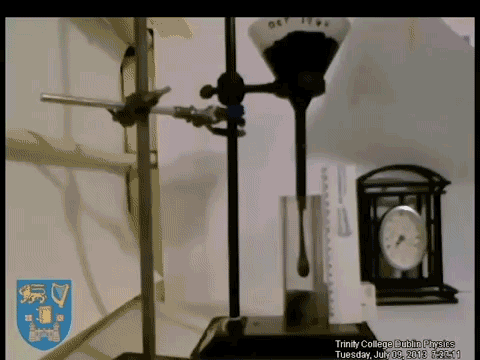



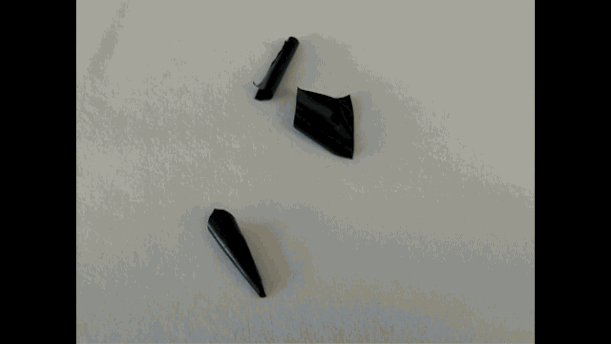
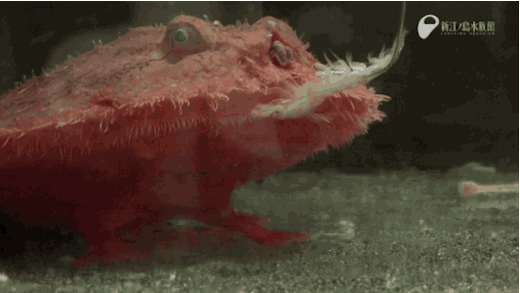
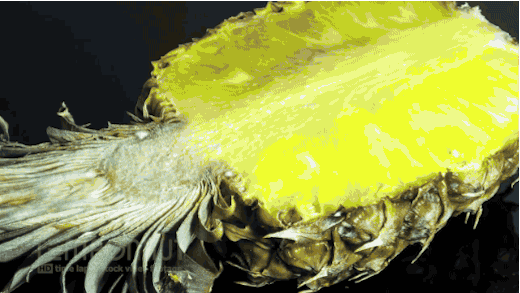
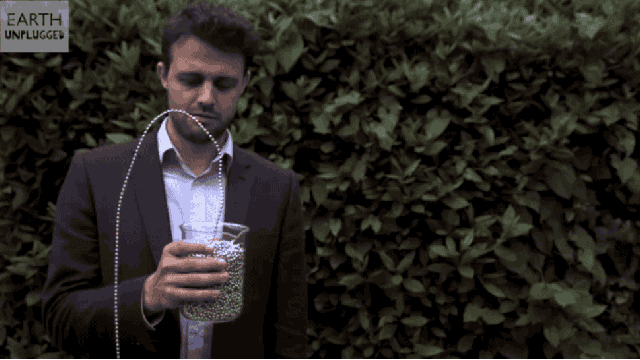
No comments:
Post a Comment